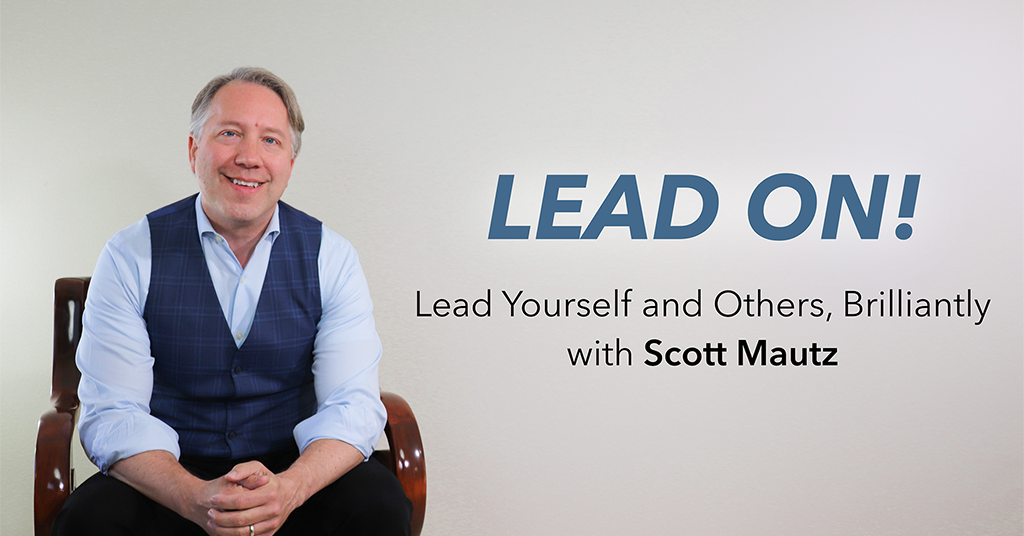
INSIGHTS (on leadership/self-leadership)
• You might be underestimating how much being open-minded and optimistic creates opportunities. In a prominent psychology study, participants were given a newspaper and asked to count the number of photographs within. Most subjects completed the task within minutes and dutifully reported that there were 43 photos, which there were. However, they were all so locked-in on the task in front of them that none of the respondents noticed two important prompts: large type on the second page that read “Stop counting – there are 43 photographs in this newspaper,” or even better, “Stop counting, tell the experimenter you’ve seen this and win $250.” The fact that no one noticed either prompt illustrates that loosening up a bit, being more open-minded, flexible, and not so tunnel-vision locked in on your tasks can open up a broader, opportunity-laden field of vision. Another experiment placed the two same chance opportunities in front of two people – money placed on a sidewalk (waiting to be found) and the potential for an encounter with a well-connected businessman planted in a coffee shop. The first respondent, a fellow with an optimistic outlook, spotted and picked up the money and struck up a conversation with the businessman, leading to more positive outcomes. The second respondent, self-described as “unlucky” and pessimistic, stepped right over the money without seeing it and kept to herself in the coffee shop. Holy self-fulfilling prophecy. So, keep your chin up and mind open and opportunity just might present itself.
IMPERFECTIONS (a mistake often made)
• I’ve made my share of mistakes, but I’m confident in saying that destroying others self-confidence isn’t one of them. Yet, it’s all too common among leaders in general. How does it happen? When leaders fail to recognize the importance of an employee’s contributions (or outright dismiss it), when they give unduly harsh feedback, have over emotional reactions, exhibit a nothing-is-ever-good-enough mindset, or engage in callousness or uncaring behavior. This leaves employees wondering if they’re truly valued and respected or if they’ll ever match up to the overbearing boss’s expectations. When I coach leaders like this, I often say, “if you’re quick to criticize and slow to praise, don’t be surprised if your employee’s work needs criticizing and isn’t worth praise.” Instead, assume your employees care about doing good work (the opposite is too often assumed). Remember that people spend time and energy trying to actively recover from unduly harsh feedback, effort that takes away from improving on the very things you want them to improve on. Focus on planting seeds of growth, not doubt, by offering constructive versus destructive feedback. Better manage anxiety and stress and plain and simple, warm up. Employees can read a lack of compassion and warmth a mile away, and they’ll stay a mile away when they sense it.
IMPLEMENTATION (one research-backed strategy, tip, or tool)
• Returning to the subject of optimism, know there are 2 forms of optimism to practice. First, unwavering optimism. I practice this by keeping a powerful quote on my desk, known in some circles as The Attitude Anthem: “Life is 10% what happens to you, 90% how you react to it.” The second form might surprise you, known as unconventional optimism. It’s especially effective in times of prolonged hardship, like during pandemics, or war, or a sustained series of personal tragedies. The idea is to be outwardly pessimistic, yet inwardly optimistic. That is, be outwardly pessimistic, or realistic that the world is difficult right now and will continue to be for a while, that the pain isn’t over yet, but inwardly optimistic–knowing that you can handle it, and will be better for it. Your resilience gets punctured when you’re not realistic that bad things will still happen. Let that thought not exhaust you, but fortify your resolve instead, as resilience is creating positive outcomes from negative events. So, borrow from both types of optimism as fits the occasion.




Leave a Reply